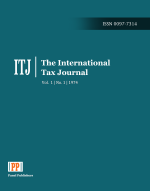The reasons for child labor in the age group (5-17) years in Alegria, based on the data from the MICS6 cluster Survey in 2019
Keywords:
work, childhood, family, child labour, school dropout, social and economic conditionsAbstract
Child labour is considered one of the serious social phenomena and this is because of its negative effects on the child and a violation of his rights on the one hand and on the other hand on the family and society, so this study aims to find out the reasons behind this phenomenon, and direct visions to treat it by asking the following question: What is the reality of child labour in Algeria? To study this topic, we adopted the descriptive analytical approach by analysing the data of the sixth multiple indicator cluster survey 2019. The results we found from this study are that the group most exposed to this phenomenon are males, those who belong to poor families, mothers with an average level of education or less, and belong to rural areas and those who have dropped out of school.
Downloads
References
1. The Ray newspaper. (No date). Children dropping out of school is a phenomenon that threatens their future. Retrieved from abrai.com /article/714688.html
2. School dropout. (No date). Retrieved from https://ar.facook:com/youceftp/posts
3. School dropout is a reality that engulfs the educational system. (No date). Retrieved from e3massar.ar.com/ara/permalink/html
4. School dropout is a reality that engulfs the educational system. (No date).
5. The survey is Multi-Indicator. (2012-2013). The fourth Multi-Indicator Cluster Survey. Algeria: Ministry of Health and hospital reform.
6. Jalal and MEED Shukur. (1998). Perverted childhood. Beirut: Arab House of Sciences.
7. Rashid zaroati. (2000). Introduction to social work. Algeria: Ibn Sinai foundation for printing, publishing and distribution.
8. Rashid zaroati. (2000). Introduction to social work. Ibn Sinai foundation for printing, publishing and distribution.
9. Sublime balcony. (2002-3003). Contribution to the study of the psychological and social causes of child labor. Department of psychology, Constantine University.
10. Mr. Abdel Hamid Morsi. (1962). Psychology of professions. Cairo: Arab renaissance House.
11. Saliha Ghanam. (2009-2010). Child labor and its relationship to family conditions. Algeria: Mazra Magister, Department of Sociology, University of Batna.
12. Tarek delwani. (No date). Islam today. Retrieved from WWW.almostachar. Com
13. Fatima Al-Muntasir Al-Katani. (2000). Parental trends in socialization and their relationship with children's self-fears. Cairo: Shorouk publishing and distribution.
14. Open Daddy. (Without). Terminology of geography. Retrieved from tec-chabanidebila.ahlamontada.net/t110-topic
15. Cream Cream. (2005). Studies in poverty and globalization. Cairo: Supreme Council of culture.
16. The Arabic language complex. (No date). Lexicon of the mediator. Istanbul: Islamic library for publishing and distribution.
17. Mohamed Sayed Fahmy. (2000). Street children-cultural diamonds of the third millennium. Alexandria: modern social Bureau.
18. Mahmoud Hassan. (1967). Family and its problems. Beirut: Arab renaissance printing and publishing house.
Downloads
Published
How to Cite
Issue
Section
License
Copyright (c) 2025 The International tax journal

This work is licensed under a Creative Commons Attribution-NonCommercial-NoDerivatives 4.0 International License.








